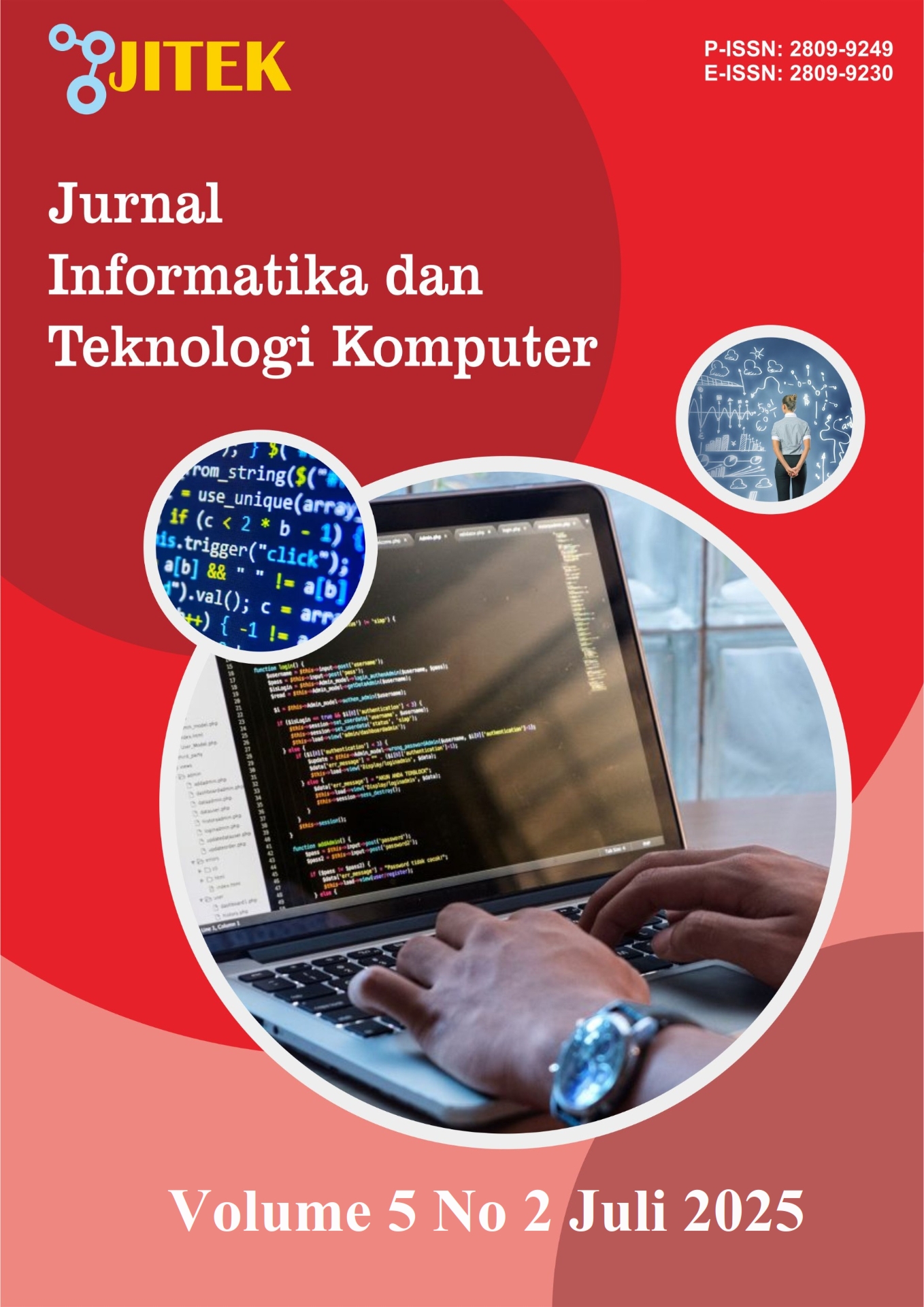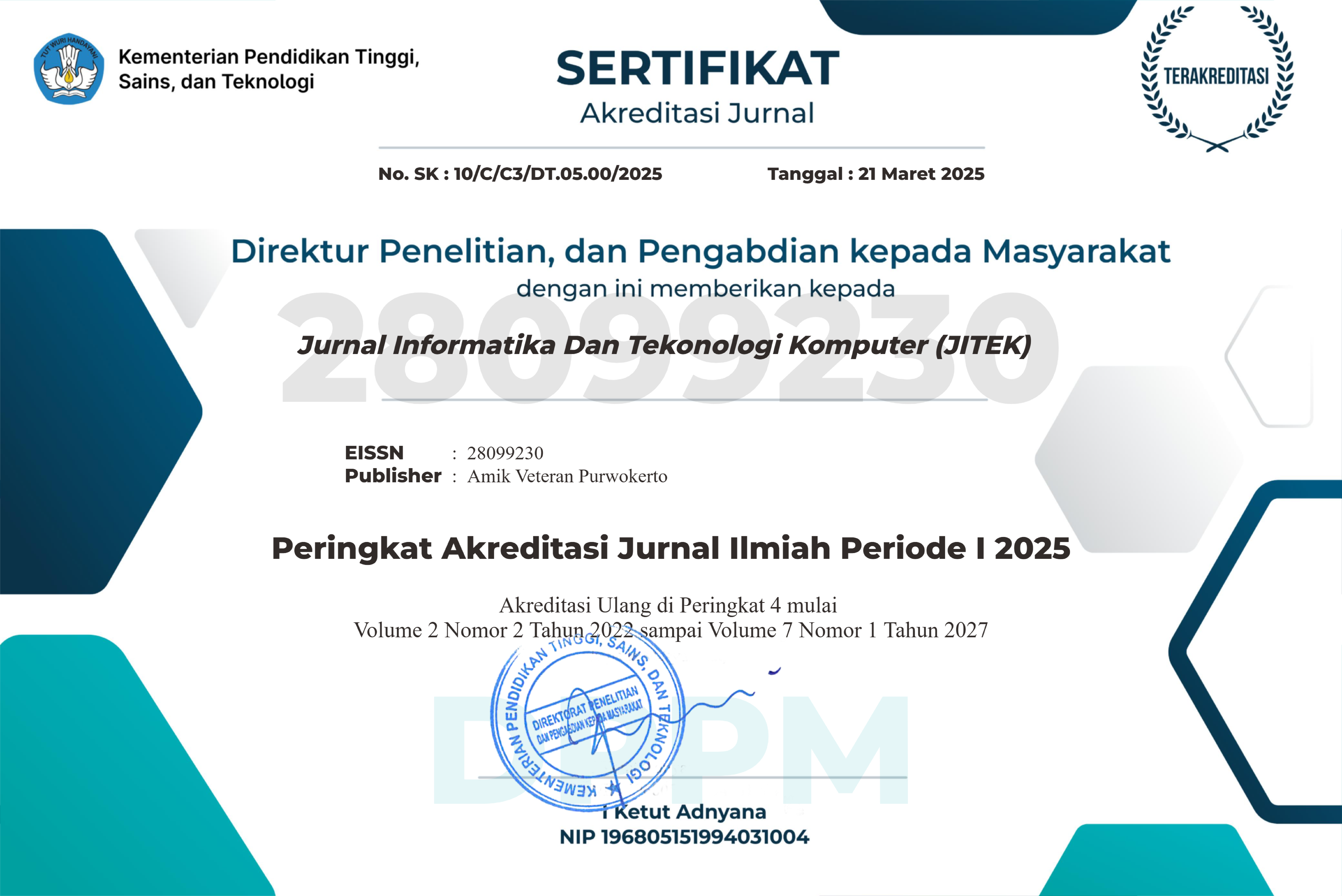Pengembangan Sistem Informasi Monitoring Kualitas Air Berbasis IoT untuk Pengelolaan Sanitasi Pondok Pesantren
DOI:
https://doi.org/10.55606/jitek.v5i2.3223Keywords:
Information System, IoT, Water Quality, pH Sensor, Turbidity, BlynkAbstract
The availability of clean water is a crucial factor in supporting sanitation and health in Islamic boarding schools, especially for bathing, washing, and toilet (MCK) facilities. Pondok Ma’had Al-Aqwam MAN Kendal faces poor water quality issues, such as murky water, unpleasant odors, and unsuitable acidity levels. This study aims to develop an Internet of Things (IoT)-based water quality monitoring information system to support real-time sanitation management in boarding schools. The system is designed using an ESP32 microcontroller integrated with pH, turbidity, and temperature sensors, displaying data directly through the Android-based Blynk application. It also includes an automation logic that activates the filtration pump when the pH or turbidity values fall outside the normal range. Testing results indicate that the system can accurately read and display water conditions and perform automatic re-filtration when water is deemed unfit for use. Expert and user validation yielded an average score of 90%, indicating the system is highly feasible for clean water management in boarding schools. Therefore, this system offers a practical and efficient solution for continuously monitoring and maintaining water quality.
References
[1] Rasyidah, U. M., “Sanitasi Air dan Dampaknya Terhadap Kesehatan,” Jurnal Kesehatan Masyarakat, vol. 7, no. 2, pp. 112–118, 2019.
[2] Taufiqurrachman, “Polusi Air dan Dampaknya pada Kesehatan,” Modul Sistem Lingkungan Industri, 2018.
[3] Mahendra, I. A., & Rohman, M. A. (2020). Rancang Bangun Alat Monitoring pH dan Suhu Air Kolam Berbasis IoT. Jurnal Teknologi dan Sistem Komputer, 8(1), 1–8.
[4] H. Ngatikoh, “Sistem Monitoring dan Penentuan Kualitas Air pada Kolam Ikan Berbasis IoT dengan Metode K-Means Cluster-ing,” Jurnal Ilmu Komputer, vol. 10, no. 1, pp. 45–52, 2022.
[5] G. B. Davis and M. H. Olson, Management Information Systems: Conceptual Foundations, Structure, and Development, New York: McGraw-Hill, 1985.
[6] L. Atzori, A. Iera, and G. Morabito, “The Internet of Things: A survey,” Computer Networks, vol. 54, no. 15, pp. 2787–2805, 2010.
[7] H. Arifin, “Sistem Monitoring Kualitas Air Berbasis Mikrokontroler,” Jurnal Teknik ITS, vol. 6, no. 2, pp. C235–C239, 2017.
[8] I. Mahendra and M. Rohman, “Rancang Bangun Alat Monitoring pH dan Suhu Air Kolam Berbasis IoT,” Jurnal Teknologi dan Sistem Komputer, vol. 8, no. 1, pp. 1–8, 2020.
[9] E. Upton and G. Halfacree, The Official ESP32 Book, 2nd ed., USA: Elektor, 2021.
[10] H. Z. Hassan et al., “Smart Water Quality Monitoring System Based on IoT and Cloud Computing,” Journal of Sensor and Actuator Networks, vol. 10, no. 1, pp. 1–15, 2021.
[11] Sugiyono, Metode Penelitian dan Pengembangan (Research and Development/R&D), Bandung: Alfabeta, 2021.
[12] Lestari, E. D., & Pramono, E. T. (2022). Monitoring Kualitas Air Sungai Berbasis IoT Menggunakan NodeMCU ESP8266. Jurnal Teknologi Informasi dan Ilmu Komputer (JTIIK), 9(2), 300–307.
[13] H. Ngatikoh, “Sistem Monitoring dan Penentuan Kualitas Air pada Kolam Ikan Berbasis IoT dengan Metode K-Means Cluster-ing,” Jurnal Ilmu Komputer, vol. 10, no. 1, pp. 45–52, 2022.
[14] N. Alim and R. Yuniarti, “Pengujian Sistem Monitoring Air Berbasis Sensor dengan Pendekatan Validasi Pakar,” Jurnal Teknologi Informasi dan Komputer, vol. 9, no. 2, pp. 100–108, 2021.
Downloads
Published
How to Cite
Issue
Section
License
Copyright (c) 2025 Jurnal Informatika Dan Tekonologi Komputer (JITEK)

This work is licensed under a Creative Commons Attribution-ShareAlike 4.0 International License.








